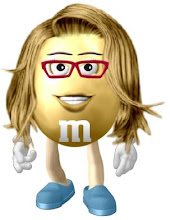 A TTY is a telephone for the Deaf
A TTY is a telephone for the Deaf
While there I noticed this man had probably 5 TTYs. A TTY stands for Text Typewriter. It looks like the illustration here. This is how it works...the Deaf person calls another person or "relay service" rep that also have a TTY. They put the phone on top of the cups and wait for the phone to be answered. When the person they are calling answers, it shows up as running type just above the keys. When the person is finished with their sentence, they type GA.. that means "Go Ahead".. its your turn to type. This goes back and forth until the conversation is over. At the end, the person who is ending the call typed SK. That means "Stop Keys" and the call is finished and the phone is returned to the hook.
A "relay service" rep is in the middle... they serve between the Deaf person and hearing person they are calling. What the Deaf person types, relay voices to the hearing person. What the hearing person responds, relay types to the Deaf person.
Technology and Communication for the Deaf
TTYs were a very very popular way (and pretty much the only way except face to face) to communicate for many years. The first TTY was huge! I have a Deaf friend who actually still has one of these old giant TTYs. Just like computers got smaller as technology developed, TTYs also got smaller and more portable. A Deaf person could easily take a TTY with them when they travel, etc. I had one of these myself for many years. Some of them come with paper so you can print your conversation after you hang up. That's really handy if someone gave you directions or an appt time, etc.
But... the TTY is becoming a dinosaur as more and more Deaf now have moved on to the computer where they can communicate with emails or instant messaging - even blogs like this. They can also call a "relay service" and make calls very similar to TTY to hearing people on the computer and guess what! Its a free service whether calling local or long distance!
The invention of VP
However... it is a fact that many Deaf people are not comfortable with writing or reading. They much prefer one to one conversation in their own language. A few years ago the VP which stands for Video Phone was developed. This was HUGE news to the Deaf community. That meant two Deaf people could actually see each other on TV monitors and have a conversation in ASL as if they were face to face.
This is the preferred method of communication today if they can't meet face to face. This is also cool way to show the other person material items. Last night I was talking to a friend on my VP and she was showing me an afghan she was knitting. Cool!
Putting a web cam on the computer works the same way as the VP and many hearing people who can sign talk to Deaf people that way.
What to do with old TTYs?
So now I have a bunch of old TTYs from this old man's house. Some of the older Deaf still use TTYs as they are not comfortable with computers and VP systems. Some people just don't like change or learning new things so they stay with what they know and are comfortable with.
The fax machine is another way the Deaf can communicate but again it is hard for them to write clearly and understand reading. This is the least favorite way to communicate as it takes time and paper to fax back and forth until both understand.
One more thing...
oh.... I can't forget cell phones and pagers that accept text, emails and Instant messaging.. this is another marvelous invention that the Deaf can benefit having. This makes communication much easier when a Deaf person is not home to use any of the above methods.
Regardless of the many ways Deaf communicate, technology has been amazing over the past 20 years. We've come a long way! Its a good time to be Deaf as there are so many ways to stay in touch!








